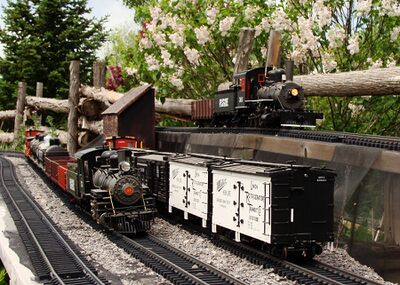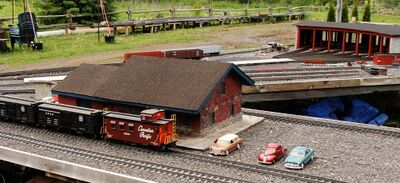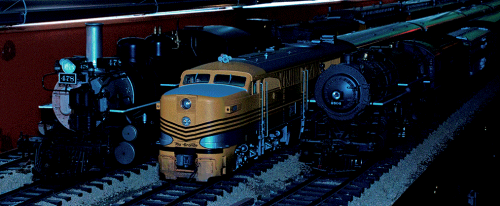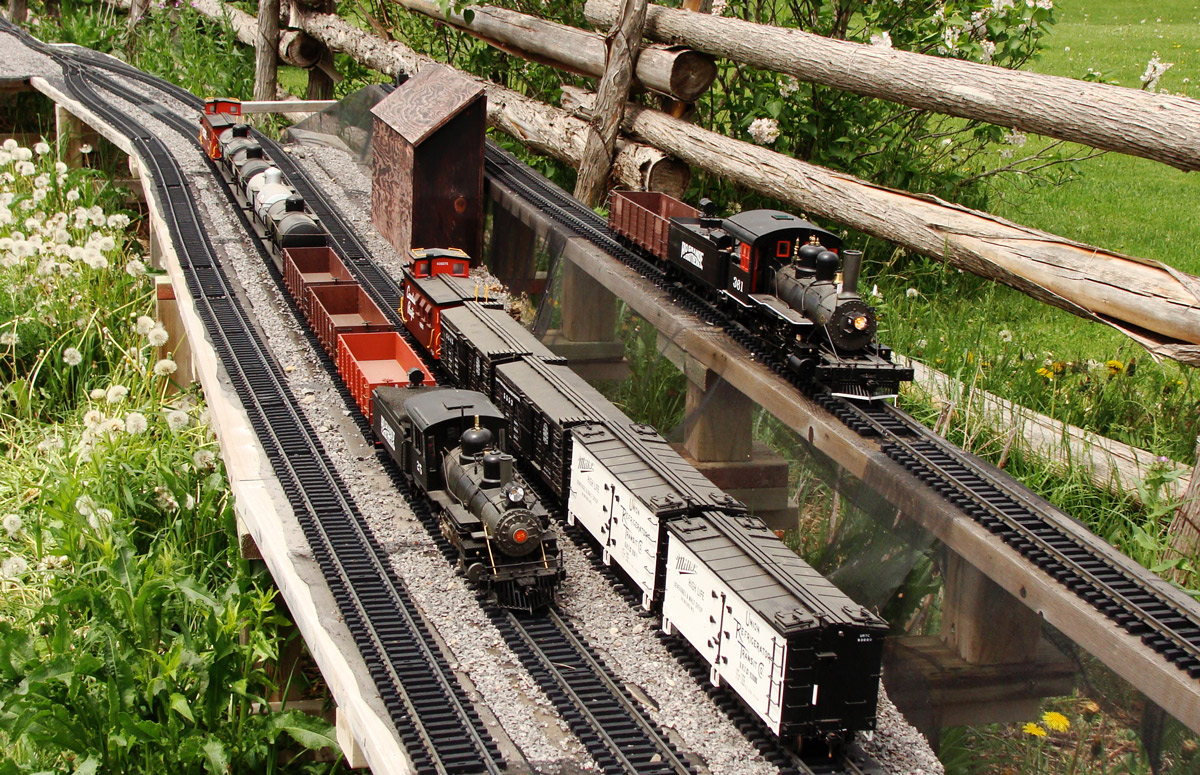Garden Railroads
Summary: A garden railroad or garden railway is a model railway system set up outdoors in a garden. Most often, it is a #1 Gauge rail track with a G scale or similar train. Lehmann Gross Bahn (LGB) first popularised these trains, and more recently other manufacturers such as Aristo Craft Trains and USA Trains have produced models in this scale/gauge combination.
Railroading in the Garden
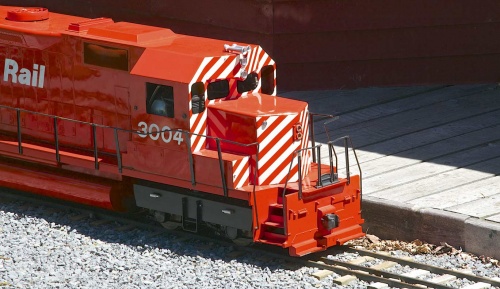
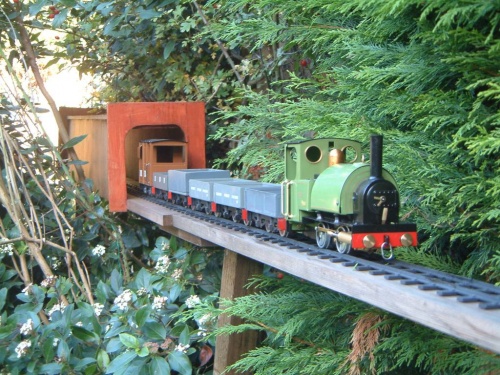
A garden railroad or garden railway is a model railway system set up outdoors in a garden. Most often, it is #1 gauge rail track with a G scale or similar train. Lehmann Gross Bahn (LGB) first popularised these trains, and more recently other manufacturers such as Aristo Craft Trains and USA Trains have produced models in this scale/gauge combination. Atlas O also makes weatherproof #0 Gauge tracks for O scale, very suitable for smaller gardens and patios.
Compared to Indoor Railroads
At its most basic level, a garden railroad works just like an indoor railway, including turnouts and turntables. However, special considerations must be taken for everything from sunlight and water to dirt and leaves, and even wildlife. The distance covered also means that electrical resistance in and between sections is much higher, and electrical power will tend to drop off at the far end for a track. Thankfully, DCC applies full power to the rails to help mitigate these factors.
Getting started in Garden Railroading
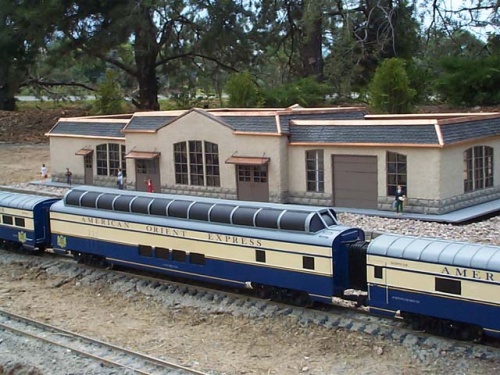
- Main article: Getting started in the garden
Getting started in Garden Railroading can be quite intimidating. There is an entire article on getting started in the garden which you may find useful. It details some things to consider when just starting out in large scale garden railroads.
Common Scales used in Large Scale Trains
- Measurements reference a 12" foot. i.e.: 1/2" to the foot means 1 inch represents two scale feet. Therefore, a three foot gauge would equal 1½ inches in 1:24.
- For a metric gauge railroad, which is what many European narrow gauge models represent, 1 metre or 1000mm would in 1:13.7 scale 73mm or ≈2.9 inches
- There is no real agreed upon standards in the Large Scale world.
| Garden Railroad Scales | |||
|---|---|---|---|
| Ratio | Metric | Decimal | Fractional |
| mm | Inches | ||
| 1:13.7 | 0.875 | ⅞" | |
| 1:19 | 16 mm | 0.629 | |
| 1:20.3 | 15 mm | 0.591 | |
| 1:22.5 | 0.533 | ||
| 1:24 | 12.5 mm | 0.500 | ½" |
| 1:29 | 0.414 | ||
| 1:32 | 0.375 | ⅜" | |
Other Related Topics
Here are some other topics which you might be interested in:
- Large scales explained - Large scale is perhaps the most confusing in terms of scales. Rolling stock ranges from 1:20.3 (narrow gauge) all the way up to 1:29 (standard gauge).
- Trucks and Wheelsets - It is especially important for outdoor railways to change to metal wheelsets.
- Tracks for the garden - Selecting the best track for your layout is important to keeping your trains running, and not you.
- Rail joints in the garden - Keep your rails joined and aligned throughout the year by using clamps and Expansion joints expansion joints to hold sections together.
- Ballast Types - There are many different types of ballast. See what people are using for various parts of the country.
Gardening for Garden Railroads
- Main article: Gardening for garden railroads
Plants are usually an integral part of a garden railway, and dwarf varieties along with pruning are often used to keep them in proper proportion. Some go so far as to use bonsai techniques; however this can be very time-consuming for large areas. Please see the main article on Gardening for garden railroads for tips on species selection and more.
Buildings for Garden Railroads
- Main article: Buildings for garden railroads
Buildings are also often used in a garden railway, though they too must be constructed to withstand the weather. Train stations and freight depots are popular, some even building whole towns trackside. The loco shed is a common place to store a locomotive (or the whole train) when not in use. Some building even double as housing for stationary decoders.
DCC in the Garden
- Main article: DCC in the garden
Generally speaking, using DCC versus indoors is almost the same. The only exceptions are for larger boosters and larger power supplies due to the larger nature of the scale. Also, you'll need to protect your electronics from the outside elements. Please see the DCC in the garden article for further reading.
Large Scale FAQ
Q: Are large scale beginner sets available?
Yes. There are sets from many manufacturers. The most common one are the Christmas sets. Before you dive in, you should spend a little time deciding what your goals may be before investing in these sets. Sets usually contain items from only one manufacturer. Do you like everything in the set? If not, perhaps youâll save money in the long run purchasing everything separately. The big downside of a set is its power supply. It is only enough for that train around a small loop of track. As you expand youâll need a better transformer or power supply. Most of these sets are not DCC equipped.
You might be better served by getting a DCC Starter Set and adding trains and track separately if you plan on running more than one train.
Edit FAQ Categories: Large Scale
Q: Can I run large scale trains inside?
Yes. There are sets from many manufacturers. The most common one are the Christmas sets. Before you dive in, you should spend a little time deciding what your goals may be before investing in these sets. Sets usually contain items from only one manufacturer. Do you like everything in the set? If not, perhaps youâll save money in the long run purchasing everything separately. The big downside of a set is its power supply. It is only enough for that train around a small loop of track. As you expand youâll need a better transformer or power supply. Most of these sets are not DCC equipped.
You might be better served by getting a DCC Starter Set and adding trains and track separately if you plan on running more than one train.
Edit FAQ Categories: Large Scale
Q: What are the minimum height & height clearances for large scale layouts?
See Standard Dimensions article for details on clearances and tolerances.
Edit FAQ
Categories: Large Scale
See more FAQs!
Other Garden Railroad Articles
- Track cleaning in the garden - How to clean your tracks in the garden
- G scale - Article about various G scale sizes, and why so many?
- Placing electronics outside - Article request on how to permanently install command stations, boosters, etc, outside so they wont' be ruined.
- G scale - Article about various G scale sizes, and why so many?
- Laying track outdoors - Article request on the various methods of laying track outdoors to survive the weather.
See Also
Links to general DCCWIki articles.
External Links
There are many great websites dedicated to garden railroading.
- For more than 35 years, Garden Railways has been the leading magazine devoted to the hobby of outdoor model railroading. While we remain committed to serving garden railroaders, we regret to announce that we are discontinuing publication of Garden Railways magazine. The Fall 2020 issue will be the last. However, the Garden Railways brand will live on in the pages of Model Railroader, where our dedicated audience of garden railroaders will continue to find seasonal news, tips, and advice from the world’s greatest model railroading experts. Garden Railways’ website, grw.trains.com, will remain active on a limited basis.
- We thank all of our customers and partners for their support of Garden Railways over the years, and look forward to seeing them in the pages of Model Railroader.
- MyLargeScale.com
- LargeScaleOnline.com
- George Schreyer's Large Scale Trains
- Wiring for DCC in the garden
- The "Gartenbahn" (Garden railroads) in Germany. Wikipedia
- Ottawa Valley Garden Railway Society
- Wikipedia Garden railroad Article about garden railroads at wikipedia.
- What is G Scale
- Adventures in Live Steam

